
Related
Topics
Police in the San Diego, California, suburb of El Cajon shot and killed an unarmed African-American man Tuesday, after his sister called 911 to report her brother was having a mental health emergency. Eyewitnesses said 30-year-old Alfred Olango was holding his hands up when he was tased by one police officer and then fired upon five times by another officer. In video posted online, Alfred Olango’s grieving sister is seen tearfully confronting police. She tells them, “I called you to help me, but you killed my brother.”
Transcript
AMY GOODMAN: This is Democracy Now!, democracynow.org, The War and Peace Report, as we turn right now to what just took place in San Diego, California. Juan?
JUAN GONZÁLEZ: Well, police in the San Diego, California, suburb of El Cajon shot and killed an unarmed African-American man Tuesday, after his sister called 911 to report her brother was having a mental health emergency. The shooting comes as protests continue over the fatal police shooting of Keith Lamont Scott in Charlotte and Terence Crutcher in Tulsa, Oklahoma. Eyewitnesses in El Cajon said 30-year-old Alfred Olango was holding his hands up when he was tased by one police officer and then fired upon five times by another. Reporter Ashley Matthews of local station NBC 7 spoke to Michael Ray Rodriguez, who said he witnessed the killing.
MICHAEL RAY RODRIGUEZ: We were leaving out of these apartments right here, facing north. I see a man. I see a black man surrounded by officers with their guns out, which caught my attention. So I tell the others, “Look, look, look,” so that we’re all looking, we’re watching. The black man was up with his hands up like this, scared to death, not knowing which way he’s going to go. As he don’t know which way he goes, he’s jerking, he’s confused. He runs this way. As soon as he runs this way, they discharge: boom, boom, boom—five shots right into him. And that’s the honest truth.
AMY GOODMAN: In a dramatic video posted to Facebook, a woman named Rumbie Mubaiwa begins filming moments after Alfred Olango is shot dead. In the background, Olango’s sister is heard crying over the death of her brother.
RUMBIE MUBAIWA: OK, so the police did it again, y’all. They shot another unarmed black person, as usual. And the lady is saying she called them for help, not to kill her brother. And they shot her brother.
JUAN GONZÁLEZ: In the video, Alfred Olango’s grieving sister is seen tearfully confronting police. She tells them, “I called you to help me, but you killed my brother.”
OLANGO’S SISTER: Guys, why couldn’t you tase him? Why couldn’t you guys tase him? Why? Why? Why? Why? Why?
RUMBIE MUBAIWA: What’s his birthday, so they could find his information?
OLANGO’S SISTER: Why couldn’t you guys tase him? I told you he’s sick. And you guys shot him.
AMY GOODMAN: The sister of Alfred Olango can be heard in the video saying, quote, “I called three times for them to come help me. Nobody came. They said it’s not priority,” end-quote. Police scanner audio at the time of the shooting reveals officers knew they were responding to a so-called 5150 call, or a mental health emergency. It does not appear that officers dispatched a Psychiatric Emergency Response Team. El Cajon Police Chief Jeff Davis acknowledged it took the officers 50 minutes—that’s 5-0 minutes—to respond to the 911 call of Olango’s sister. He said there was no weapon found at the scene of the killing. Chief Davis disputed witness accounts that Olango had his hands in the air, saying the man pointed an object at an officer with both hands, as if to fire a handgun.
POLICE CHIEF JEFF DAVIS: The male subject paced back and forth while the officers tried to talk to him. At one point, the male rapidly drew an object from his front pants pocket, placed both hands together on it and extended it rapidly towards the officer, taking what appeared to be a shooting stance, putting the object in the officer’s face. At this time, one of the officers with the Taser discharged his Taser in an effort to subdue the subject. Simultaneously, the officer who had the object pointed at him discharged his firearm, striking the male.
JUAN GONZÁLEZ: Some reports on social media claim that officers confiscated the cellphones of witnesses who recorded the killing. El Cajon Police Chief Davis denied those claims. He said police did obtain a cellphone video from a worker at a drive-through window of a nearby restaurant who filmed the killing and volunteered the footage. Chief Davis said the video had been handed over as evidence to the district attorney and would not be made public while an investigation remains ongoing. El Cajon police did, however, distribute a picture they say is a still photo taken from the video, showing a pair of officers pointing their weapons at Alfred Olango, whose hands appear to be raised at shoulder height. It’s unclear from the photo if he’s holding any objects. The killing immediately sparked protests. Hundreds of people gathered at the Los Panchos restaurant, where Olango was killed. They later protested outside El Cajon police headquarters.
CHRISTOPHER RICE-WILSON: They’re saying they shot an unarmed black man. And we have to ask why. Why is it OK to just kill a man when you think he has a weapon? The policy states you must see a weapon, and, more than that, the weapon must be aimed, pointed or causing harm to you. It’s not enough to say somebody had a gun or a knife or any weapon, and shoot them because they possessed a weapon. The police have to be under threat. They have to fear for their life. And the mere existence of an object in any man’s hand, let alone a black man’s hand, is not justification for killing him.
AMY GOODMAN: That was Christopher Rice-Wilson of Alliance San Diego. San Diego protesters are planning to demonstrate all day today outside El Cajon police headquarters beginning at 9:00 a.m. California time. This comes as protests continue over fatal police shootings of Keith Lamont Scott in Charlotte and Terence Crutcher in Tulsa, Oklahoma. A United Nations representative recently compared the police killings of African Americans in the United States to the, quote, “past racial terror of lynching,” unquote. Special thanks to Democracy Now!’s John Hamilton for that report.
This is Democracy Now!, democracynow.org, The War and Peace Report. When we come back, we’ll be joined by Arlie Hochschild. Her latest book, Strangers in Their Own [Land]: Anger and Mourning on the American Right. Stay with us.

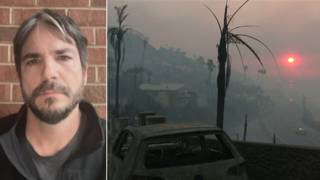
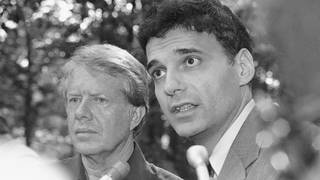
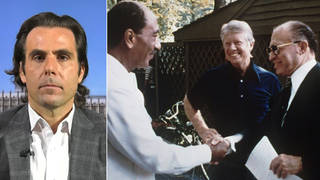
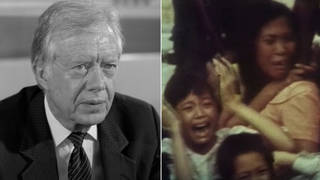



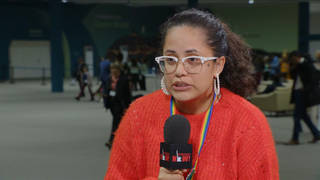

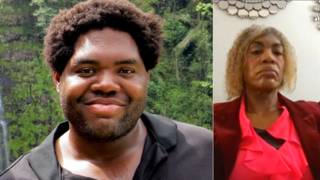
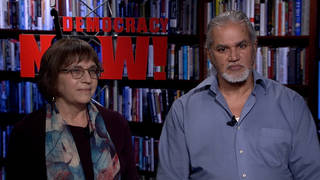
Media Options